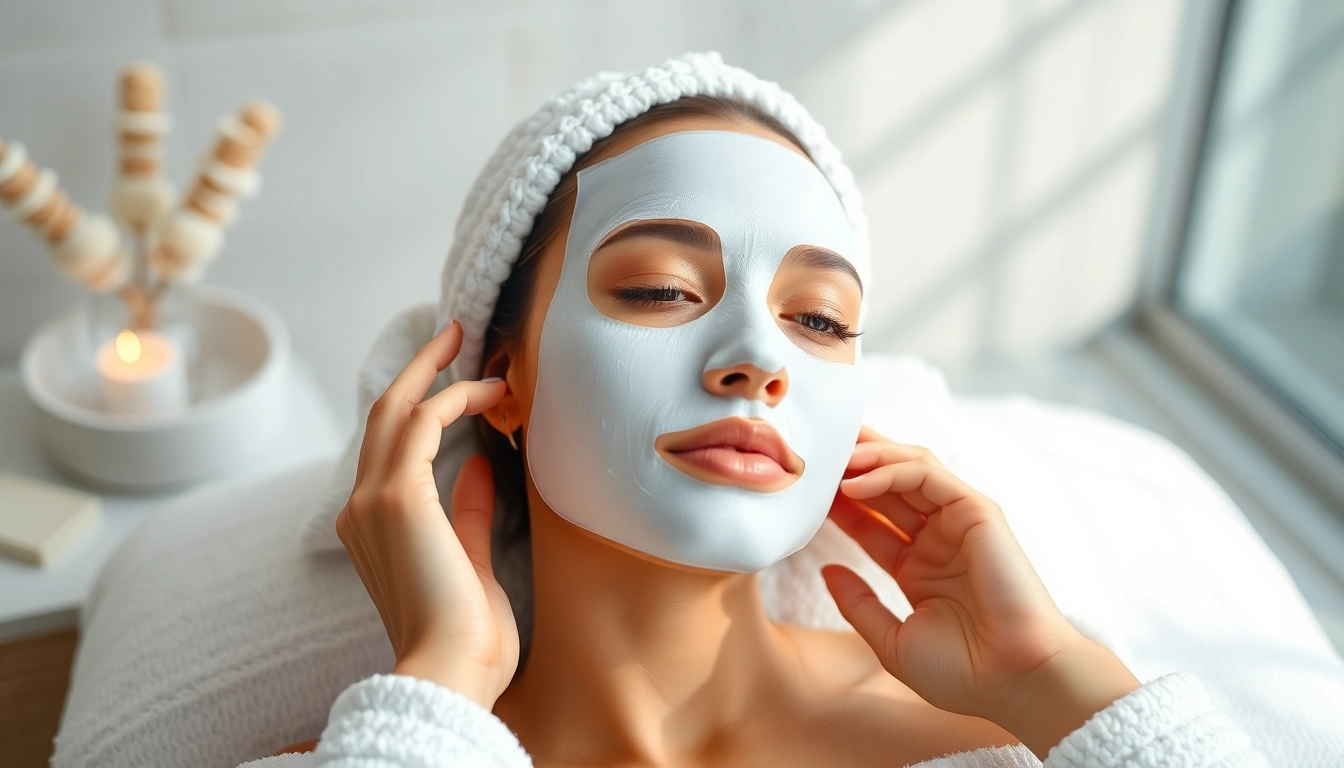Understanding Sheet Masks
What is a Sheet Mask?
Sheet masks have become a staple in skincare routines around the world, especially in Asia, where they originated. These masks are typically made from a variety of materials, including cotton, cellulose, or hydrogel, and are infused with serums that contain beneficial ingredients for the skin. The primary purpose of a sheet mask is to deliver concentrated doses of hydration and nutrients directly to the skin. Unlike traditional masks that are applied and then washed off, sheet masks are designed to stay on the skin, allowing the ingredients to penetrate deeply.
The Science Behind Sheet Masks
The efficacy of sheet masks lies in their ability to create a barrier against evaporation. When a sheet mask is placed on the face, it traps moisture and warmth, which enhances the absorption of the serum into the skin. Many sheet masks include humectants such as hyaluronic acid, glycerin, or aloe vera, which attract water to the skin and aid in hydration. Scientific studies show that using a sheet mask can increase skin’s moisture levels significantly when compared to not using a mask at all.
Types of Sheet Masks Available
Sheet masks come in a variety of types designed to target specific skin needs. Here are some popular options:
- Hydrating Masks: These masks typically contain hyaluronic acid or glycerin, providing an immediate boost of moisture.
- Brightening Masks: Often infused with vitamin C or niacinamide, brightening masks aim to enhance skin tone and reduce dark spots.
- Anti-Aging Masks: Formulated with collagen or peptides, these masks help to reduce the appearance of fine lines and wrinkles.
- Brightening Masks: Aimed at improving skin’s luminosity using ingredients like licorice root extract or vitamin C.
- Clay Masks: These serve to absorb excess oil and detoxify the skin, beneficial for oily or acne-prone skin types.
Benefits of Using Sheet Masks
Hydration and Moisture Retention
One of the most notable benefits of sheet masks is their ability to hydrate the skin effectively. The material creates an occlusive layer, which aids in moisture retention. This can be particularly beneficial for individuals with dry or dehydrated skin. Regular use can lead to a more plump and healthy complexion.
Targeting Skin Concerns with Specific Ingredients
Consumers appreciate the versatility of sheet masks, as they can target various skin concerns with specific ingredients. For example, those with dry skin might choose a sheet mask with hyaluronic acid, while someone looking to brighten their complexion may opt for a mask rich in vitamin C. This tailored approach allows for more effective treatment and results.
Convenience and Ease of Use
Sheet masks are incredibly easy to use, making them a favorite among busy individuals. They require no mixing or preparation; you simply open the package, apply the mask to clean skin, and relax for the recommended time. This ease of use, combined with their ability to provide significant benefits in a short period, makes sheet masks an excellent option for skincare enthusiasts.
How to Choose the Right Sheet Mask
Identifying Your Skin Type
Before selecting a sheet mask, it’s essential to identify your skin type, whether it be oily, dry, combination, or sensitive. Each type of skin has different needs, and matching a sheet mask to your specific skin type will yield the best results. For example, those with oily skin may benefit from a mask with salicylic acid, while dry skin may require a more hydrating formula.
Reading Ingredients Labels
Understanding the ingredients in a sheet mask can greatly impact its effectiveness. Look for quality ingredients that address your skin concerns. Natural ingredients such as aloe vera or green tea can soothe and nourish the skin, whereas synthetic additives may trigger reactions in sensitive skin. Checking for free-from claims, such as paraben-free or cruelty-free, can also guide your selection.
Brand Recommendations and Reviews
When choosing a sheet mask, it’s helpful to consider brand reputation and customer reviews. Brands that have positive feedback on their products from dermatologists and skincare professionals instill confidence in their efficacy. Moreover, customers often share their real-life results, providing insights into what to expect.
Incorporating Sheet Masks into Your Routine
Best Practices for Application
To maximize the benefits of your sheet mask, follow these application tips:
- Prep Your Skin: Always start with clean skin. Consider exfoliating beforehand to enhance serum absorption.
- Apply Before Other Products: Sheet masks should be used as the first treatment after cleansing allowing the skin to absorb the serum efficiently.
- Follow Instructions: Adhere to the recommended wearing time on the packaging—usually between 15 to 30 minutes—to avoid the mask drying out and pulling moisture from your skin.
Frequency of Use for Optimal Results
The frequency of sheet mask application can depend on individual skin needs. While some may find that using a mask 2-3 times a week offers sufficient benefits, others with increased skin concerns may opt for daily application, especially with hydrating masks. However, balance is key; overusing them can lead to potential irritation or imbalance.
Layering with Other Skincare Products
Sheet masks work well within a broader skincare routine. For enhanced effects, consider layering with serums, oils, or creams. After the mask, applying a nourishing moisturizer can seal in the benefits, ensuring long-lasting hydration. Experimenting with the incorporation of sheet masks into your routine can lead to visible improvements in overall skin texture and appearance.
Common Mistakes to Avoid with Sheet Masks
Using Expired or Inappropriate Masks
It’s vital to check expiration dates on sheet masks before use. Expired or inappropriate masks can lead to skin irritation or less effective results. Keeping an eye on storage conditions, such as avoiding extreme temperatures, can also extend a mask’s shelf life and efficacy.
Overusing Sheet Masks
Although sheet masks offer amazing benefits, overusing them can be counterproductive. Skin can become desensitized to ingredients or stripped of natural oils, particularly when over-applied. Monitor how your skin responds and adjust the frequency accordingly.
Neglecting Aftercare
Many users overlook the importance of post-mask care. After removing a sheet mask, it’s essential to follow up with a moisturizer to lock in the hydration and nutrients that were delivered. Ignoring this step can result in lost benefits and potential dryness.



